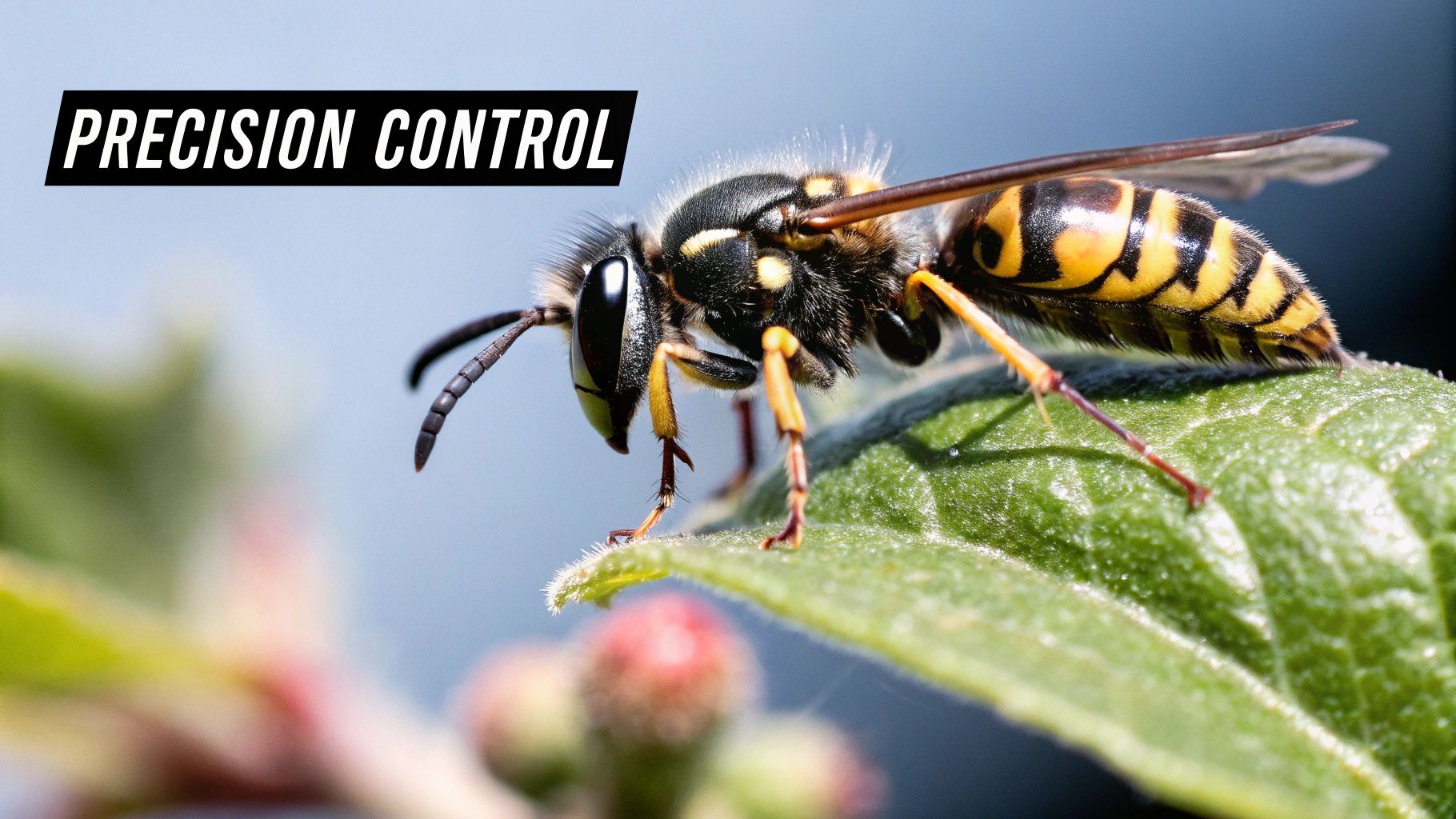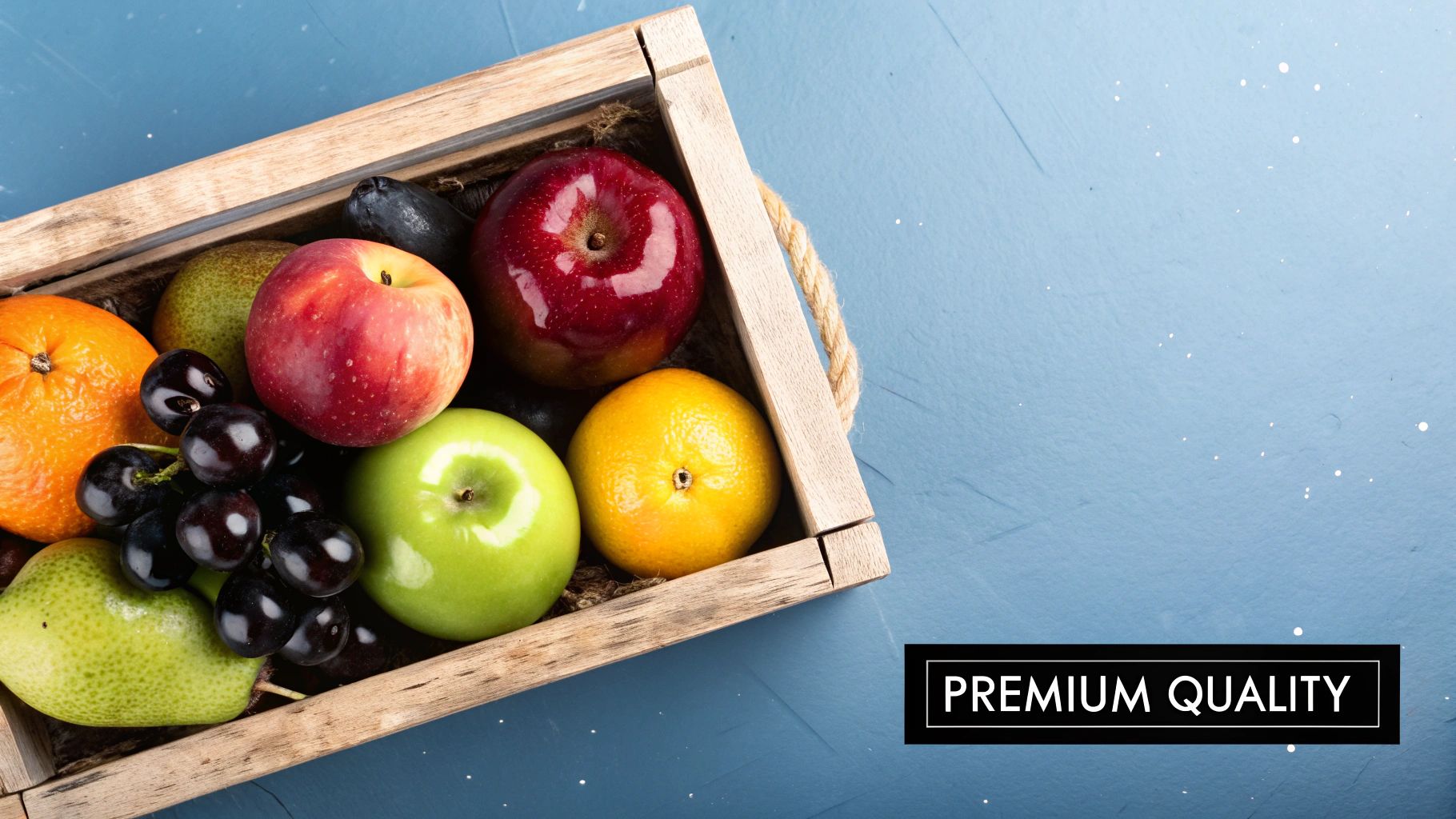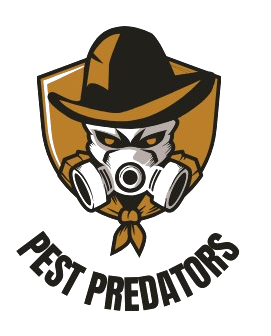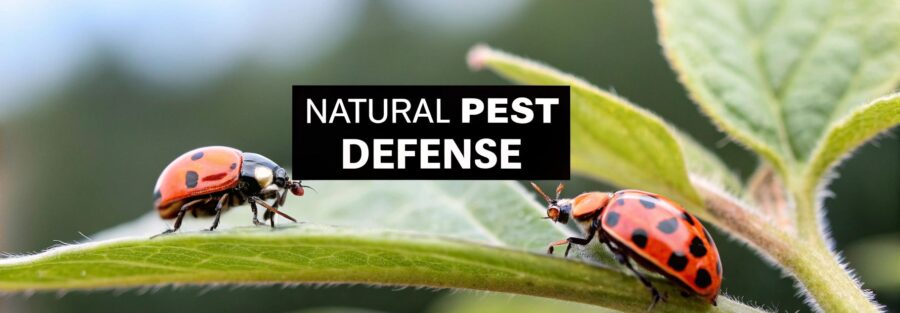Moving beyond the limitations of harsh chemical treatments, both modern agriculture and property management are increasingly turning to a smarter, more sustainable approach for pest management. Biological pest control is not merely an alternative; it is a powerful, science-backed strategy that utilises nature's own mechanisms to restore ecological balance and manage troublesome species effectively. This method offers a wealth of benefits that protect our environment, improve human health, and deliver significant long-term financial savings.
This in-depth guide explores the eight most significant biological pest control advantages, moving beyond theory to provide practical examples and actionable insights for each point. We will detail how these natural systems offer targeted, self-regulating solutions that chemical pesticides simply cannot match. You will learn how leveraging natural predators, parasites, and pathogens can lead to more resilient and healthier environments, from large-scale farms to your own back garden. We'll examine how this approach prevents pesticide resistance, enhances crop value, and integrates seamlessly into broader pest management programmes. Discover why harnessing these ecological solutions offers a robust, forward-thinking path to effective and responsible pest control for homeowners, businesses, and agricultural producers alike.
1. Environmental Safety and Sustainability
One of the most significant biological pest control advantages is its minimal impact on the environment, promoting a healthier, more sustainable ecosystem. Unlike conventional chemical pesticides that can contaminate soil, water, and air, this method uses nature's own mechanisms. By introducing natural predators, parasites, or pathogens, it selectively targets specific pests without leaving behind harmful residues.
This approach ensures that the surrounding environment remains safe for non-target species, including beneficial insects like pollinators, pets, and wildlife. It maintains the delicate balance of the local ecosystem, preventing the widespread, indiscriminate harm often caused by broad-spectrum chemicals. This focus on preservation and balance is a cornerstone of responsible, long-term pest management.

How It Works in Practice
The strategy involves releasing organisms that naturally prey upon or parasitise the unwanted pests. For instance, releasing ladybirds in a garden provides a highly effective, natural solution for aphid infestations without any chemical intervention. Similarly, farmers use Bacillus thuringiensis (Bt), a naturally occurring soil bacterium, to control caterpillar populations in crops, a method that is harmless to humans and other animals.
Key Insight: Biological control is a self-regulating system. Once established, populations of beneficial organisms can persist, offering long-term pest suppression without repeated applications. This creates a sustainable cycle rather than a temporary chemical fix.
Actionable Tips for Implementation
- Identify the Pest: Correctly identify the pest to select the most effective natural enemy.
- Source Locally: Whenever possible, use native beneficial species that are already adapted to your local environment.
- Create a Welcoming Habitat: Plant flowers that provide nectar and pollen for adult beneficial insects, and provide a water source to encourage them to stay.
- Monitor and Adjust: Regularly check the balance between pest and predator populations to ensure the strategy is working effectively.
This method is particularly valuable in settings where chemical use is restricted or undesirable, such as in organic farming, around homes with children and pets, and in sensitive ecological areas. To delve deeper into how these methods create a safer environment, you can explore more about eco-friendly pest control strategies.
2. Cost-Effectiveness and Long-Term Economic Benefits
While the initial investment in biological pest control may seem higher than buying a chemical spray, one of its greatest advantages lies in its long-term economic benefits. This method drastically reduces the need for repeated chemical purchases and the associated labour costs for application. By establishing self-sustaining populations of natural enemies, it provides continuous pest suppression without ongoing expenditure.
This sustainable approach moves away from a cycle of recurring costs, creating lasting value for farms, greenhouses, and even home gardens. The economic returns are realised not just through savings on pesticides, but also through higher crop yields, improved quality, and access to premium markets for organic or sustainably grown produce.

How It Works in Practice
The economic model is based on a single, or occasional, upfront cost for introducing biological agents that then reproduce and manage pests for seasons to come. A classic example is the control of the cottony cushion scale in California's citrus industry, a programme that has saved an estimated $1 billion annually since its inception. In commercial greenhouses, biological control programmes have been shown to cut pesticide costs by 60-80% while maintaining or improving crop health.
Key Insight: Biological control shifts pest management from an operational expense to a long-term capital investment. The initial cost creates a self-regulating asset that delivers returns year after year, unlike chemical treatments which are a sunk cost each time they are applied.
Actionable Tips for Implementation
- Calculate Long-Term ROI: Instead of comparing single purchase prices, calculate the total cost of ownership over 5-10 years for both chemical and biological methods.
- Start with a Pilot Programme: Test the approach on a smaller, controlled area to demonstrate its return on investment before scaling up.
- Integrate with IPM: Combine biological controls with other Integrated Pest Management (IPM) strategies, such as crop rotation and habitat management, for maximum savings.
- Track All Benefits: Monitor not only direct cost savings from reduced pesticide use but also indirect gains like premium pricing for produce and reduced crop loss.
This approach is especially powerful in commercial agriculture and horticulture where input costs are a major factor in profitability. By investing in nature's own systems, growers can achieve significant financial savings. For a comparison of pest management expenses, you can explore more about the overall costs of pest control.
3. Targeted Pest Control with Minimal Non-Target Impact
A primary advantage of biological pest control is its incredible precision. Unlike broad-spectrum chemical pesticides that kill indiscriminately, biological control agents are often highly specific to their target pests. This specialisation means they affect only the intended species, leaving beneficial insects, pollinators, and other non-target organisms unharmed.
This surgical approach prevents the disruption of complex ecological relationships, preserving the natural balance within an ecosystem. It ensures that while a problem pest is brought under control, the essential work of other organisms, from pollination to natural decomposition, continues undisturbed. This precision targeting is a key reason why biological methods are considered a cornerstone of integrated and sustainable pest management.

How It Works in Practice
The specificity of biological control is based on natural co-evolution between a pest and its enemy. For example, the Rodolia cardinalis beetle was introduced to control the cottony cushion scale on citrus trees, a task it performs without harming other insects. Similarly, parasitic wasps like Aphidius colemani only lay their eggs in specific aphid species, while Trichogramma wasps exclusively target the eggs of moths and butterflies. This highly focused predator-prey relationship ensures effectiveness without collateral damage.
Key Insight: The high degree of specialisation in biological control agents is their greatest strength. It allows for the removal of a pest species without creating a void in the ecosystem or triggering secondary pest outbreaks, a common issue with chemical sprays.
Actionable Tips for Implementation
- Accurate Pest Identification: Correctly identify the pest species before selecting a control agent to ensure a successful match.
- Use Specific Agents: Favour agents with a narrow host range over generalist predators to minimise impact on other species.
- Monitor Non-Target Populations: Regularly observe populations of beneficial insects and other local wildlife to confirm the control method is not causing unintended harm.
- Conduct Host-Specificity Tests: For new introductions, especially in large-scale agriculture, ensure rigorous testing is done to confirm the agent will not harm native fauna.
This targeted approach is invaluable in sensitive environments like organic farms, protected conservation areas, and domestic gardens where preserving biodiversity is a top priority. Organisations like CABI (Centre for Agriculture and Biosciences International) have pioneered research in this area, championing specific, safe, and effective biological solutions worldwide.
4. Prevention of Pesticide Resistance Development
A critical advantage of biological pest control is its ability to prevent or significantly slow the development of resistance in pest populations. Chemical pesticides exert immense selection pressure, favouring the survival of resistant individuals, which leads to widespread control failure over time. Biological control, however, introduces complex, co-evolving predator-prey or parasite-host dynamics that pests cannot easily overcome.
This natural arms race maintains genetic diversity and uses multiple modes of action simultaneously, making it exceptionally difficult for pests to develop effective resistance. The control agents adapt alongside the pest, creating a sustainable and long-lasting solution that avoids the costly and environmentally damaging cycle of developing new chemicals to combat newly resistant pests. This is one of the most compelling biological pest control advantages for long-term management strategies.

How It Works in Practice
The strategy works because natural enemies attack pests in diverse ways, unlike the single mode of action typical of a synthetic chemical. For example, the Vedalia beetle (Rodolia cardinalis) has successfully controlled cottony cushion scale in California for over a century without any signs of resistance. Similarly, classical biological control programmes targeting invasive species have maintained their effectiveness for decades, demonstrating the durability of this approach.
Key Insight: Biological control is a dynamic, evolving system. Predators and parasitoids can adapt to changes in their prey, preventing the pest from developing a simple, uniform resistance mechanism and ensuring ongoing effectiveness.
Actionable Tips for Implementation
- Combine Multiple Agents: Use a combination of different biological control agents (e.g., a predator and a parasitoid) to attack pests from multiple angles.
- Maintain Refugia: Leave small, untreated areas where non-resistant pests can survive. This helps dilute any resistance genes that may appear in the overall pest population.
- Rotate Control Types: If supplementing with other methods, rotate different types of biological or biopesticide controls to vary the selection pressures.
- Monitor Effectiveness: Regularly assess the performance of your control agents to detect any shifts in pest susceptibility early on.
This method is especially vital for agricultural and horticultural systems where the same pests are targeted year after year, making chemical resistance a near certainty. It ensures that control measures remain effective for generations, providing stability and reducing reliance on an ever-changing arsenal of chemical treatments.
5. Human Health and Safety Benefits
A crucial advantage of biological pest control is its significant contribution to human health and safety. This method drastically reduces or eliminates the need for synthetic chemical pesticides, thereby protecting agricultural workers, consumers, and local communities from exposure to potentially toxic substances. By avoiding harmful chemicals, it prevents acute poisoning, long-term health complications, and pesticide residues on food.
This approach fosters safer working environments and a healthier food supply chain. It eliminates the risks associated with mixing, spraying, and handling hazardous materials, making it a responsible choice for both commercial agriculture and home gardening. The focus on natural solutions ensures that pest management does not come at the cost of human well-being.
How It Works in Practice
The strategy centres on using living organisms that are harmless to humans but lethal to specific pests. For example, greenhouse workers can introduce predatory mites to control spider mites without needing personal protective equipment (PPE) required for chemical sprays. Similarly, organic farms produce residue-free fruits and vegetables, offering consumers safer and healthier food choices. Products containing Bacillus thuringiensis (Bt) are so safe they are often approved for use on crops right up to the day of harvest.
Key Insight: Biological control methods are inherently safer for people and animals. The release of beneficial insects like ladybirds in a garden poses no risk to playing children or pets, a stark contrast to the lockdown periods required after a chemical spray.
Actionable Tips for Implementation
- Follow Handling Guidelines: Always adhere to the supplier’s instructions for handling and releasing biological agents to ensure their effectiveness and safety.
- Train Staff Properly: Ensure any workers involved are trained in the correct release techniques to maximise the impact of the beneficial organisms.
- Maintain the Cold Chain: For many live biological agents, maintaining a consistent, cool temperature from delivery to application is vital for their survival.
- Monitor for Allergies: While rare, some individuals may have allergic sensitivities to certain insects or mites, so it's wise to monitor staff during initial applications.
This method is indispensable in environments where human health is a top priority, such as schools, hospitals, organic food production, and residential areas. It provides peace of mind by delivering effective pest management without compromising the safety of the people who live and work in the treated spaces.
6. Self-Sustaining and Self-Regulating Control Systems
A key biological pest control advantage is its ability to create a self-perpetuating system that provides long-term pest suppression. Once established, biological control agents reproduce and maintain their populations, automatically adjusting their numbers in response to pest availability. This creates a dynamic, living equilibrium that manages pests continuously without constant human intervention.
Unlike chemical treatments that require repeated applications, this approach introduces a solution that grows and adapts. The beneficial organisms become a permanent part of the local ecosystem, offering a persistent defence against pest outbreaks. This self-regulating nature makes it an incredibly efficient and cost-effective strategy over the long run.
How It Works in Practice
The goal is to establish a stable population of natural enemies that can survive and thrive in the target environment. For example, once a population of Aphytis melinus, a parasitic wasp, is released in a citrus grove, it can control California red scale for decades. Similarly, predatory mites can be introduced into a greenhouse to keep spider mite populations below economically damaging thresholds year after year.
Key Insight: Biological control creates a responsive, living system. The predator population increases when pests are abundant and decreases when pest numbers fall, naturally preventing both pest outbreaks and the complete eradication of the food source, ensuring long-term balance.
Actionable Tips for Implementation
- Allow Establishment Time: Be patient after introducing agents; it takes time for them to build a self-sustaining population.
- Provide a Supportive Habitat: Introduce "banker plants" or other flowering plants that offer alternative food sources like nectar and pollen, helping beneficial insects survive when pest numbers are low.
- Avoid Disruptions: Do not use broad-spectrum chemical pesticides that could harm the established populations of your beneficial agents.
- Monitor Ratios: Regularly check the balance between pest and predator populations to confirm the system is functioning as expected and adjust if necessary.
This approach is ideal for managing chronic or recurring pest problems in stable environments like orchards, greenhouses, and large-scale agricultural fields. By fostering a natural balance, it provides a truly sustainable and hands-off method of pest management.
7. Compatibility with Integrated Pest Management Systems
Another key biological pest control advantage is its seamless integration into Integrated Pest Management (IPM) programmes. Biological control often serves as the cornerstone of a comprehensive IPM strategy, working synergistically with cultural, mechanical, and highly selective chemical controls to create a robust, multi-faceted approach to pest management.
This compatibility allows for a holistic system that is more resilient and effective than relying on a single method. By prioritising biological agents, IPM programmes reduce dependence on synthetic pesticides, thereby minimising environmental impact and the risk of pesticide resistance. This integrated approach creates a balanced, sustainable solution for long-term pest suppression.
How It Works in Practice
IPM strategies combine multiple tactics based on thorough monitoring and an understanding of the pest's life cycle. For instance, greenhouse growers often integrate biological control agents like predatory mites with precise environmental management (controlling temperature and humidity) to suppress pests. In agriculture, vineyard managers may combine the use of cover crops to harbour beneficial insects with targeted, timed sprays of selective, bio-compatible pesticides that do not harm the predator populations.
Key Insight: Biological control is not an isolated tactic but a foundational layer in a sophisticated management system. Its success is amplified when combined with other non-chemical methods, creating a defence-in-depth strategy against pests.
Actionable Tips for Implementation
- Develop a Plan: Create a comprehensive IPM plan that establishes biological control as the primary defence.
- Use Selective Controls: If chemical intervention is necessary, choose selective pesticides that are compatible with your beneficial organisms.
- Monitor Everything: Implement rigorous monitoring programmes for pests, beneficials, and environmental conditions to make informed decisions.
- Train Your Team: Ensure all staff understand IPM principles and their roles in the decision-making process.
This integrated approach is ideal for complex environments like commercial agriculture and large-scale horticultural operations where a single-tactic approach is rarely sufficient. To understand how these components work together, you can find out more about what Integrated Pest Management is.
8. Enhanced Crop Quality and Market Value
A key biological pest control advantage that directly impacts profitability is the enhancement of crop quality and subsequent market value. By avoiding synthetic chemical pesticides, produce is free from harmful residues, resulting in a cleaner, safer, and more appealing product for consumers. This method effectively reduces pest-related blemishes and damage, leading to higher-grade yields that command premium prices.
This approach aligns perfectly with growing consumer demand for organic and sustainably grown food. Crops managed with biological agents often have a superior appearance, taste, and a longer shelf life, as they are not subjected to the stress of chemical applications. This quality improvement opens doors to high-value markets, including organic retailers and international export, where strict residue limits are enforced.
How It Works in Practice
The strategy focuses on preventing pest damage before it occurs, ensuring the plant's energy is directed towards producing high-quality fruit and foliage. For example, greenhouse tomato growers release parasitic wasps to control whiteflies, resulting in unblemished, top-grade tomatoes. Similarly, organic strawberry farmers use predatory mites to manage spider mites, producing premium berries that can command price increases of 30-50% in the organic market.
Key Insight: Biological pest control is not just a defensive measure; it is a proactive investment in product quality. By nurturing a healthy crop ecosystem, growers can produce superior goods that meet the highest standards of safety and consumer preference, directly translating to increased revenue.
Actionable Tips for Implementation
- Pursue Certification: Obtain organic or other sustainability certifications to officially validate your practices and access premium markets.
- Market Your Story: Document and share your biological control practices with consumers to build brand trust and justify higher price points.
- Build Buyer Relationships: Develop connections with buyers who specialise in high-quality, organic, or low-residue produce.
- Optimise Handling: Invest in effective post-harvest handling and storage to preserve the superior quality you have achieved in the field.
This method is particularly valuable for commercial growers aiming to differentiate their products in a competitive marketplace. It provides a clear path to not only protect crops but to elevate their status, meeting the stringent demands of modern consumers and unlocking greater financial returns.
Biological Pest Control Advantages Comparison
| Aspect | Environmental Safety and Sustainability | Cost-Effectiveness and Long-Term Economic Benefits | Targeted Pest Control with Minimal Non-Target Impact | Prevention of Pesticide Resistance Development | Human Health and Safety Benefits | Self-Sustaining and Self-Regulating Control Systems | Compatibility with Integrated Pest Management Systems | Enhanced Crop Quality and Market Value |
|---|---|---|---|---|---|---|---|---|
| Implementation Complexity 🔄 | Moderate; requires species selection and monitoring | Moderate; higher initial investment but lower ongoing costs | High; precise species identification and host-specificity testing | Moderate; needs management of multiple agents and environment | Low to moderate; training needed for handling biological agents | Moderate; requires time for population establishment | High; demands coordination with multiple control methods | Moderate; requires quality assurance and marketing efforts |
| Resource Requirements ⚡ | Uses natural predators, parasites, pathogens | Initial investment in control agents and training | Specialized agents for specific pests | Multiple biological agents and continual monitoring | Trained personnel and safe handling procedures | Habitat, alternative food sources, and monitoring | Integrated approach combining various pest management tools | Investment in certification, quality control, and marketing |
| Expected Outcomes 📊 | Maintains ecosystem balance and reduces chemical residues (⭐⭐⭐) | Long-term cost savings and sustainable pest suppression (⭐⭐⭐) | High precision pest control with minimal non-target effects (⭐⭐⭐) | Prevents resistance development ensuring long-term efficacy (⭐⭐⭐) | Eliminates pesticide exposure risks improving health (⭐⭐⭐) | Continuous, low-level pest suppression with minimal intervention (⭐⭐⭐) | Robust, flexible pest management enhancing system resilience (⭐⭐⭐) | Premium crop quality and market premiums (⭐⭐⭐) |
| Ideal Use Cases 💡 | Organic and eco-sensitive environments | Large-scale farms seeking long-term savings | Situations demanding minimal impact on beneficial species | Areas with high pesticide resistance risk | Environments prioritizing worker and consumer safety | Systems aiming for stable, self-regulating pest control | Comprehensive IPM programs | Producers targeting organic/ premium markets |
| Key Advantages ⭐ | Zero chemical pollution; supports biodiversity | Reduces recurring costs; increases crop value | Protects beneficial insects; reduces secondary pest outbreaks | Eliminates resistance cycles; sustainable control | Safe food and work environment; no protective gear needed | Minimal ongoing input; automatic population balance | Enhances IPM effectiveness; supports selective pesticide use | Residue-free, high-value crops; better market access |
Embracing a Greener, More Effective Future in Pest Control
Navigating the complex world of pest management reveals a clear and compelling path forward: embracing the numerous biological pest control advantages we've explored. Moving beyond the short-term, often harsh, impact of conventional chemical pesticides is no longer just an alternative; it's a strategic evolution towards smarter, more sustainable solutions. We have seen how these methods safeguard our environment by minimising non-target harm and how they foster long-term economic stability by creating self-regulating systems that reduce the need for repeated, costly interventions.
The core message is one of proactive partnership with nature rather than reactive chemical warfare. From enhancing crop quality and market value in agricultural settings to ensuring the health and safety of families in residential environments, the benefits are both profound and practical. By focusing on targeted, species-specific control, biological agents prevent the widespread development of pesticide resistance, a critical issue that threatens the efficacy of traditional methods. This intelligent approach ensures that our pest management strategies remain effective for generations to come.
Key Takeaways for Your Pest Management Strategy
Adopting a biological approach means fundamentally shifting your perspective. Instead of simply asking "How can I eliminate this pest?", the question becomes "How can I restore ecological balance to manage this pest population naturally?"
Consider these pivotal insights:
- Sustainability is Economic: The self-sustaining nature of many biological controls provides a significant return on investment. A single introduction of a beneficial organism can offer pest suppression for years, drastically cutting long-term costs associated with chemical purchases and application labour.
- Safety is Paramount: Reducing reliance on synthetic pesticides directly translates to a safer environment for your employees, customers, and family. This is particularly crucial in sensitive areas like food service establishments, schools, and healthcare facilities.
- Integration is Strength: Biological control is not an isolated tactic but a cornerstone of a robust Integrated Pest Management (IPM) system. When combined with cultural, physical, and mechanical controls, its effectiveness is magnified, creating a resilient and multi-faceted defence against pests.
Mastering these concepts allows you to build a pest control framework that is not only highly effective but also aligns with modern environmental and ethical standards. It is an investment in the health of your property, your community, and the wider ecosystem. The transition requires expertise and a deep understanding of local ecology, which is why partnering with a specialist is the most crucial step. A qualified professional can conduct a thorough assessment, identify the precise biological agents needed, and ensure they are integrated seamlessly into a comprehensive management plan tailored to your unique circumstances.
Ready to leverage the full spectrum of biological pest control advantages for your property? The experts at Pest Predators Limited specialise in designing and implementing bespoke, science-led pest management solutions. Contact us today to schedule a consultation with a Field Biologist and discover how a greener, more intelligent approach can secure a pest-free future for your home or business. Pest Predators Limited.



